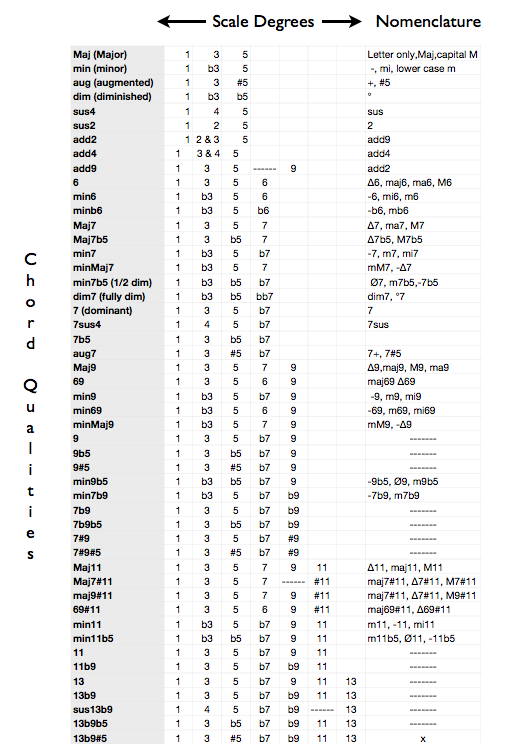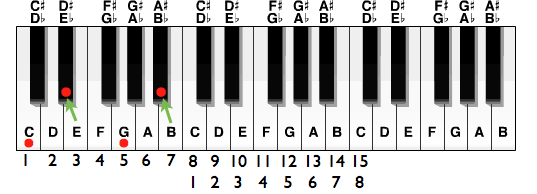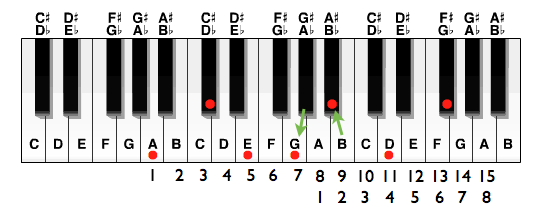Building chords using scale degrees relates all chords to Major scale with the same root note. This is the quickest and most effective method but you have to know your Major scales cold! If you can’t think of the notes to any Major scale in your head, here is a practice sheet for it. Here is also a Quiz for Key Signatures which is the best way to learn them quick.

Do the following when building a chord:
- Determine the chord quality.
- Find the scale degrees for that chord quality.
- Determine the root note.
- Build a Major scale from that root note. *When you know them well enough this can be done in your head.
- Relate the scale degrees of the chord quality to the Major scale with the same root. Adjust the notes accordingly.
Example: Cmin7
- Quality – minor 7
- 1 b3 5 b7
- Root Note – C
- C Major – CDEFGABC
- Adjust notes according to the scale degrees:
1=C
b3= flat the 3rd degree of the C major scale from E to Eb.
5=G
b7= flat the 7th degree from B to Bb
Answer: Cmin7 = C Eb G Bb

Let’s try a harder one:
Example: A13b9
- Quality – 13b9
- 1 3 5 b7 b9 11 13
- Root Note – A
- C Major – A B C# D E F# G# A
- Adjust notes according to the scale degrees:
1=A
3= C#
5=E
b7= flat the 7th degree from G# to G natural. (green arrow)
9=flat the 9th degree from B to Bb. (green arrow)
11=D
13=F#
Answer: A13b9 – A C# E G B D Bb

* The less important notes are often omitted to make large chords like this more playable. In this case A13b9 it is most common to omit the 11, 5 and sometimes the root if you are playing with a bassist. Bass players commonly play roots and 5ths.
Do this enough and, like your major scales, you will just know the notes in any chord. It takes lots of time and repetition. Keep at it and good luck!
 Copyright secured by Digiprove © 2015 jeff lauffer
Copyright secured by Digiprove © 2015 jeff lauffer 
Leave a Reply